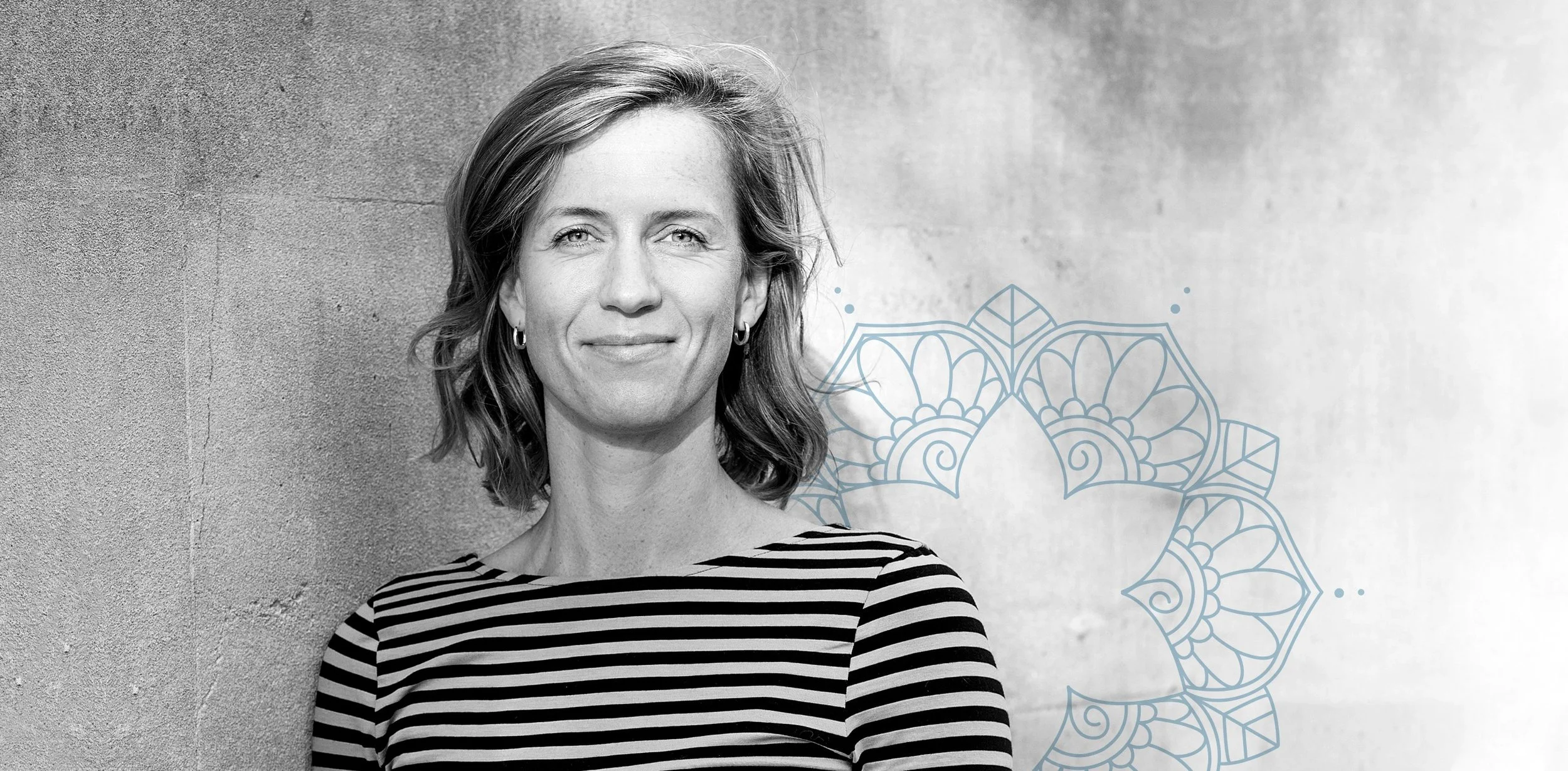
Looking back I now realise that Yoga has always been my passion
Looking back I now realise that Yoga has always been my passion; physical expression in connection with body, breath and the inner place of stillness.
It was present in earliest memories, my parents introducing me to meditation when I was seven, a ‘walking’ one for a child to practice a few minutes each day. We still laugh at the memory of them coming back into the bedroom a couple hours after being safely ‘tucked in’ only to find me walking up and down on the bed, still reciting my mantra.
As an adolescent many of my summers were spent volunteering on silent retreats in the Black Forest in Germany and then travelling to India in my late teens and the beginning of more intense study.
At the same time my life has been a journey into movement. I remember always wanting to roll, jump, skip and shift though space. My childhood was largely dedicated to community dance and my early career emerged working as a professional contemporary dancer.
My heart has always wanted to find expression and connection. And not distinct from us all, this embrace is above all sought in relationship; with mother and father, brother, friends… and with myself. Sometimes in the sweetness of warmth and intimacy, other times in the fire of controversy and isolation. Looking for love, wanting to come to that inner place we know as home.
And so this relationship with yoga has sustained and accompanied me throughout my life. Integrated into my dance career, it led me back to facilitating breath and meditation workshops throughout Europe and to being invited to teach yoga teacher trainings in London and in Manchester.
I remain at that place of seeking expression and connection, of ‘building relationship’. The body and breath have the capacity to inform us in every moment and guide the mind to connect to the present, to what is now.
And so I find that my work is to guide myself and support others to feel embodied and to be ready to be in the world with courage and warmth… for ourselves and for others.
What is Somatics?
The word 'Soma' means “body.” Somatic practices are body-focused approaches that recognise how our life experiences are deeply stored in our bodies and nervous system. Our Autonomic Nervous System is always at work, scanning our environment for cues of safety or danger. Over time, the ways we’ve learned to cope with stress or difficult experiences become embodied “habits.” Even if these responses no longer serve us, our body remembers—and will often return to them for protection. Somatic work helps us gently bring awareness to these patterns and create new possibilities for how we live, move, and feel.
Body First, Mind Follows
Often it feels like our thoughts are driving our experience, but in truth, our body comes first. Subtle sensations in the body shape our emotional state, and from there the mind creates a story. These patterns can feel automatic and difficult to change—until we learn to slow down and listen to our body’s wisdom.
What Makes Movement Somatic?
Any form of movement—yoga, dance, walking, swimming—can be Somatic. But Somatic practice isn’t just about doing the movement, it’s about how we do it. Somatic movement invites slowing down and paying attention. It encourages sensing deeply into muscles, fascia, cells, and the nervous system. It helps reconnect us with forgotten or disconnected parts of ourselves. By moving consciously, we can reduce tension, restore ease, and create healthier movement patterns that support us as we age.
Why Do We Need Somatics?
Modern life often pulls us away from our bodies. Screens disrupt natural sleep cycles, busy schedules override hunger or fatigue, and stress keeps us in fight-or-flight. Over time this can lead to burnout, shutdown, or feeling disconnected from ourselves. Somatic practices help us: Reconnect body and mind Deepen self-awareness Honour our emotions rather than ignore them Restore trust and safety in our body Rediscover playfulness, joy, and creativity

“Through encouragement and praise, she celebrates each individual that steps onto the mat in front of her. She expertly deconstructs each student’s existing yoga knowledge and rebuilds them again – layer by layer – with new levels of sophistication and understanding that propel their practices forwards.”
Training & Experience
My love of learning refines my teaching and personal practice, here is some of training and experience.
What lies beneath – John Stirk
Exploring Subtle body – Tias Little
Relax & Renew – Judith Hanson-Lasater
Pregnancy Yoga – Uma Dinsmore-Tuli
Delivering Mindfulness Meditation facilitation programme – Michael Stone
iRest Yoga Nidra – Richard Miller
500 hours Further Education Certification – Yoga London
400 hours Further Education – Paul Dallaghan – Samahita
200 hours Foundation Ashtanga – Paul Dallaghan – Samahita
NLP & Coach Practitioner
100 hours Rocket Vinyasa – The Yoga People
Yoga Alliance 200 hours Teacher Training – Yoga London
International Art of Living Foundation Facilitator
Youth Empowerment Seminar Teacher
Yoga for the Special Child
AOL Yoga Intensive 1996
Postgraduate diploma – London School of Contemporary Dance
Bachelor of performing arts – Northern School of Contemporary Dance
Inspirational links for learning
John Strik – www.johnstirk.com
Michael Stone – www.michaelstoneteaching.com
Tias Little – www.prajnayoga.net
Yoga for the Special Child – www.specialyoga.com
iRest Yoga Nidra – www.irest.us
Paul Dallaghan – Samahita – www.samahitaretreat.com
Sri P O Tiwari – Kaivalyadam – www.kdham.com
NLP & Coach Practitioner – www.inspire360.co.uk
100 hours Rocket Vinyasa – www.itsyoga.com
